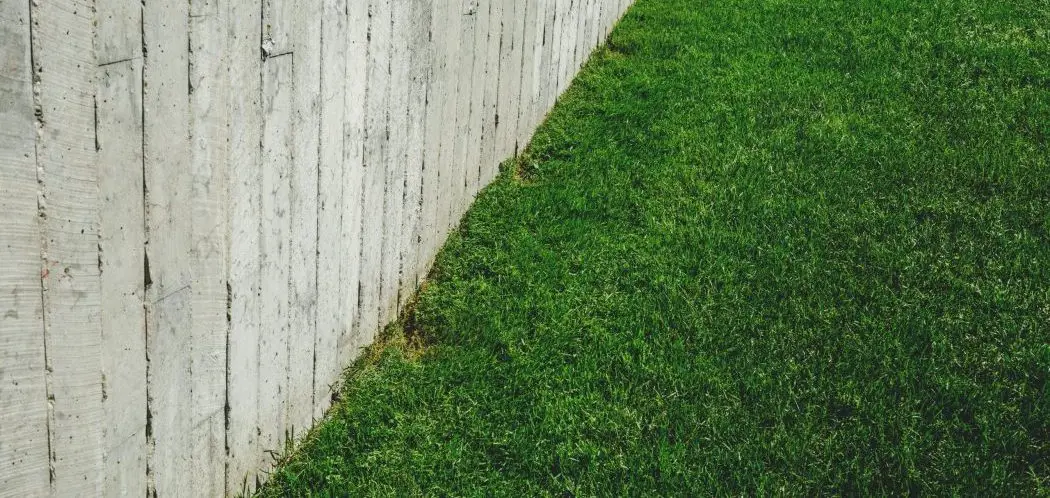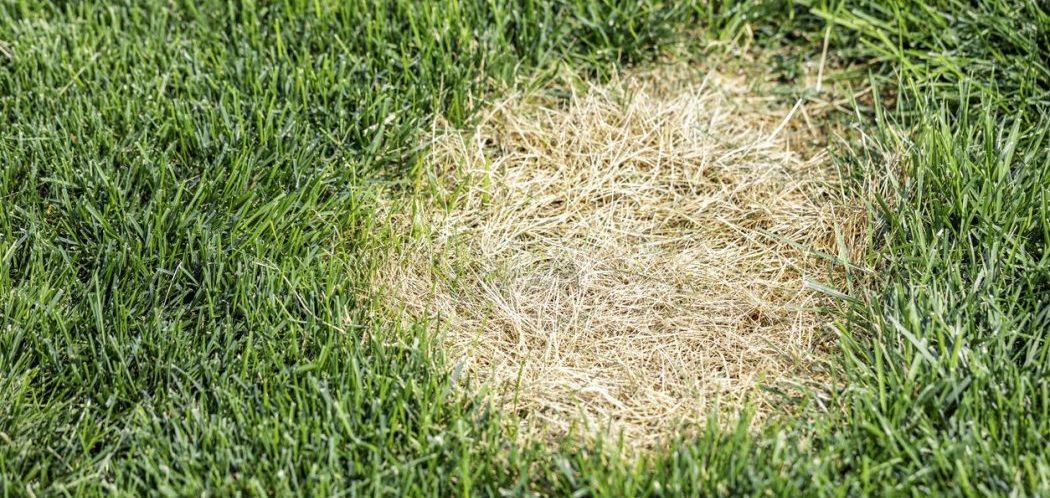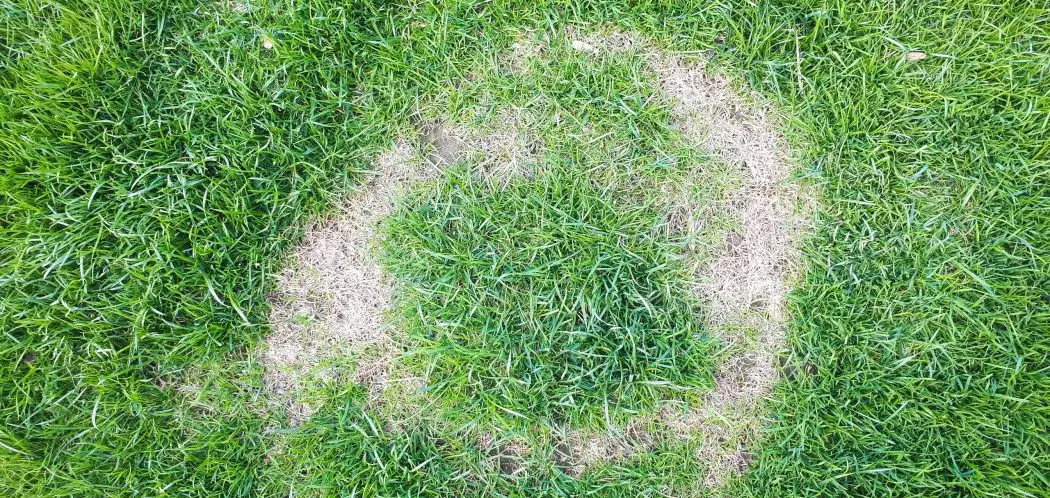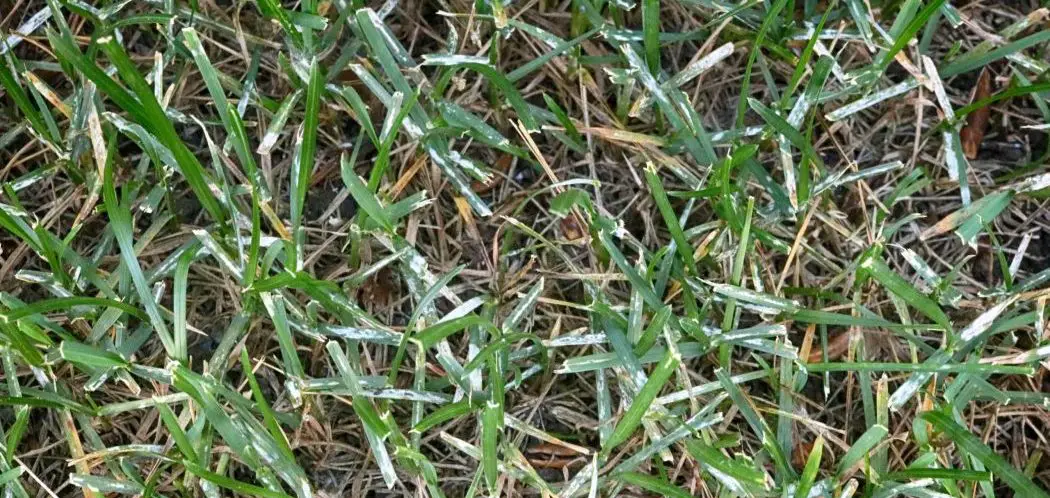Lawn rust is a lawn disease that is also called rust disease or puccinia spp. It loves shade, heat, and humidity, and you’ll also find it in soils that are low in nitrogen. That alone makes it an unusual lawn disease. Lawn rust results from an infection caused by different fungi, and it’s called rust disease because it looks like rust on your grass blades, with an orange-like or rust-like appearance.
Unfortunately, rust disease can spread rapidly simply by grass blades brushing up against themselves or even through the wind. Lawn rust is a fairly common grass disease and it can be frustrating. The disease starts out looking orange- or rust-colored and eventually develops actual fruiting bodies on the blades of grass.
What Causes Lawn Rust?
Lawn rust is a fungal disease that usually occurs in late summer or early fall when grass growth is relatively slow.
Besides lack of nitrogen in the soil, lawn rust can also be caused by very dry weather. It is orange-red or yellow in color and attaches itself to the blades of grass, but it is easily wiped off if you try to do so. It is fairly easy to get rid of but you have to act quickly because if you don’t, raised pustules can form, and even though the grass won’t be killed, it can still weaken them and make them easier to break.
What Does Lawn Rust Look Like?
Lawn rust not only looks like rust but it is a soft, powdery substance that easily rubs off of the blades if you try to do this. Unfortunately, the rust-like substance can also rub off on your shoes, clothes, and even other lawn tools, which makes it a very inconvenient and sometimes unpleasant problem.
It can be orange, yellow, or brown in color, or any combination of these colors. It may start out as being very light in color, but it’s easy to notice once there’s more of it because it will feel like it’s getting onto everything, even your lawn mower and edger.
When Are You Likely to See Lawn Rust?
Lawn rust is most common in the late summer or early fall months. Why? Because lawn rust thrives in conditions that are damp, warm, and very humid. In late summer and early fall, grass is growing very slow and both the temperature and the humidity tend to be high.
Lawn rust thrives in warm, damp conditions and in intermittent bright sunlight, as well as grass that stays damp for more than six hours at a time. Just like mold can grow and thrive when it’s hot, musty, and humid, so can lawn rust. These things are especially true when you have a year that has been a little wetter than usual. In this instance, the chances of finding lawn rust are much greater.
Will Lawn Rust Go Away on its Own?
It is definitely possible for lawn rust to go away on its own, especially if you use a basic fertilizer on your grass on a regular basis.
In fact, if you minimize the amount of shade your lawn gets – remember that lawn rust loves the shade – it is possible to kill the lawn rust and even prevent it from coming back in the future.
A basic fertilizer can be used to get rid of lawn rust, but you should never use a fungicide to get rid of lawn rust unless it’s a very severe case of the disease. If you do use a fungicide, you’ll need to apply it before the lawn goes dormant for the winter. So, fertilizing with a nitrogen-based fertilizer, aerating the grass blades to make them less damp, and only applying a fungicide when it’s absolutely necessary are the best things you can do to help get rid of lawn rust.
Propiconazole
How to Prevent Lawn Rust
The main thing you can do to prevent lawn rust is to make sure your grass is nice and thick. It may sound funny, but this is the way it works. Simply put, thick lawns will fight off pests and diseases, which tend to be attracted to grass that is weakened. Because of this, fertilizing regularly with a nitrogen-based fertilizer, and using both the fertilizer and lots of water for long periods at long intervals – never for short periods at short intervals – are a great way to prevent lawn rust from happening in the first place.
Prevention of lawn rust is always less time-consuming than having to get rid of it once it’s here, although that isn’t too difficult, either.
Scotts Step 3
Using a synthetic fertilizer like Scotts 33040 LawnPro Step 3 Lawn Food is a straight nutrient fertilizer which will give you quick results. It’s high in nitrogen which will help push fast growth.
Make sure you don’t over apply and make sure you water it in!
Another thing you can do is aerate your grass regularly. Since fungi grow best in moist, damp soil and poor drainage areas, aerating your lawn is a good way to reduce the chance of getting lawn rust. As mentioned earlier, since lawn rust loves the shade, minimizing the amount of shade your lawn gets can actually help kill the lawn rust and prevent it from recurring.
How to Treat Lawn Rust
If you have been using a nitrogen-based fertilizer all along, the odds of the lawn rust going away on its own are very high. You can treat lawn rust by continuing your fertilizer treatments and by heeding the following suggestions:
- Mow the lawn regularly – This will make sure the top layer of the fungus growth is eliminated and that the grass left behind is well-aerated. Use a mower with a grass catcher so the clippings aren’t kept on top of the lawn for too long, which can cause too much dampness and increase the odds of getting lawn rust. While you’re at it, you should wash your equipment thoroughly after each mow so that the lawn rust is removed from your mower and/or other equipment.
- Water the lawn regularly, and always water it in the mornings. Regular watering encourages fast growth, which discourages further fungus growth on the lawn. It also gives the lawn more time to dry out throughout the day so it doesn’t stay too moist for too long.
FAQs:
Is Lawn Rust Harmful to Humans?
No, lawn rust is not harmful to humans. Although it is a fungal infection, lawn rust is not contagious and cannot be spread to humans. It can spread from one blade of grass to another by mowing or edging the lawn, by the wind dispersing the rust, or by the blades rubbing up against one another, but it cannot be spread to humans. If you go to cut your grass one day and notice that you have lawn rust, you’ll have no need to panic because it simply cannot harm human beings.
Is Lawn Rust Harmful to Pets?
Just like humans, pets cannot be harmed by lawn rust. Remember, this is a fungal infection and therefore can’t be spread from one animal to another. Because of this, you can let your pets play in your yard even when you have lawn rust because they won’t be infected just by doing so. The only problem you might have is that the lawn rust can leave an orangish tint to the pets’ coats, but you can get rid of this by simply giving them a bath.
Can Lawn Rust Hurt Dogs?
No, lawn rust cannot hurt dogs – or any other animal, for that matter. Other than getting some of the rust-colored powdery substance on their coats, which is never permanent and easy to get rid of, there is nothing you have to worry about by letting your dogs and other pets run around and play in the yard when your grass is suffering from lawn rust. It may be an inconvenience, but it is not dangerous or harmful in the least.
How to Get Lawn Rust Off Your Shoes
It is easy for lawn rust to cling to your shoes and clothing, but there is no reason to panic because this is not an actual rust, at least not in the way most people think of it. If you’re wearing sneakers, you can likely just throw them in the washing machine or wash them with mild soap and water. As a general rule, it is always possible for lawn rust to stain something, including your shoes, clothing, or even your lawn care equipment. That being said, depending on how much you get on your shoes and how bad the lawn rust is in the first place, it may not be a big deal for your shoes or clothing items to have lawn rust on them because in some cases, these items can be easy to clean.
Lawn rust can weaken the blades of grass on your lawn and make the lawn look terrible, but in many ways the disease is more of a nuisance than it is a danger. Fortunately, it is simple to get rid of and even prevent lawn rust in the future, and it includes using a lot of common sense and taking good care of your grass so that it remains thick and plush. Regular fertilization and water are two of the most important things you can do to help get rid of lawn rust, keeping your grass looking its very best in the meantime.
Here are some of my favorite lawn care products
Thanks a lot for making it to the end of this post! I hope you found it useful. Here are some lawn care products that I use and that I think you’ll also find helpful. These are affiliate links, so if you do decide to use any of them, I’ll earn a commission.
In all honesty, these are some of the basic products that I use and recommend to everyone.
Broadcast Spreader
This Scotts Elite dual rotary spreader is not a professional grade model but it’s excellent for homeowners.
I really like the edge guard on it. It’s really easy to switch on and off so it’s great for going around my driveway and flower beds.
If you’re not looking to spend hundreds of dollars, I’d definitely recommend this model. It spreads out a wide path and is great quality for the cost.
Backpack Sprayer
This 4-Gallon sprayer is my absolute favorite. It sprays for a really long time. I’ve had this sprayer for quite a while and I’ve never had the battery run out.
The adjustable pressure switch is a really import feature to me.
You can order a lot of accessories for this model but I’ve never really found much of a need for it.
Head Aerator
Hand aerators are great for small spots if you’ve got construction debris or a spot that constantly dries out.
You can also fill these holes with organic matter that will hold a bit more moisture.
This one by Yard Butler is an absolute bargain. It pulls nice long cores. I also use it for taking soil samples around the yard!






